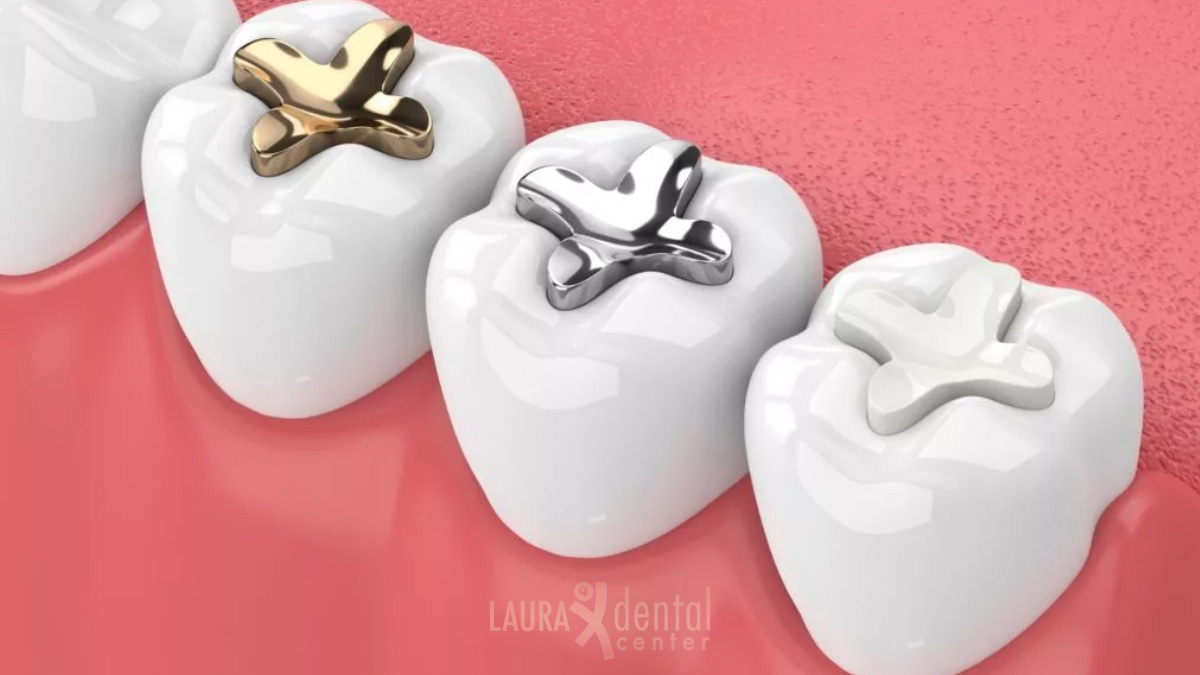The Different Types of Dental Fillings and Which One is Right for You

Have you been thinking about getting dental fillings, but not sure which type of filling to get? Whether you need cosmetic fillings or structural fillings, understanding the types of dental fillings available can help you determine which one will be best for your situation. This article will outline the differences between different types of dental filling such as composites, amalgam, and traditional crowns to help you make the most informed decision about which dental filling will be right for your smile!
Different Types of Dental Filling
The different types of dental fillings are acrylic, amalgam (metal), glass ionomer, resin composite, silver ionomer or tooth-colored filling. Amalgam fills cavities because it can be easily molded around the edges. Acrylics are mostly used to cover metal fillings if there is not enough tooth left to hold the metal in place. Glass ionomers are an option for patients with sensitive teeth who cannot wear metal crowns. Resin composites may be a good choice for patients who want their fillings to look natural and those who grind their teeth at night. Silver ionomers last longer than amalgams but don’t match the color of your teeth as well. Tooth-coloured filling matches your natural tooth color, but they’re only suitable for small repairs that do not require strength from a larger material such as a metal crown or bridge.
The Traditional Filling
If you need a quick fix, the traditional filling will be your best option. This filling uses a setting material to seal off the tooth’s opening, whereas most other fillings use a more liquid-based material. This type of filler usually takes a couple hours to put in place and needs to stay in place with dental cement. The process might require some numbing medication to lessen the discomfort, but many people find this option much more tolerable than other types of fillings.
Composite Resin (White Filling)
Dental fillings are a common way to restore dental cavities or other tooth decay. There are two major types of dental fillings: inlays (or resin-based) and onlays (or porcelain-based). Inlays are less expensive, but tend to show imperfections more easily. An inlay consists of a filling material bonded to the tooth structure in such a manner that there’s no space between the filling material and the enamel.
Onlays consist of an filling material which has been built up along the top surface of one or more teeth with a significant gap between it and the gum line. They may be made from composite resin materials like polyvinyl siloxane (PVS), glass ionomer cement, zinc phosphate cement, polycarboxylate cement, and methacrylate cement. Composite fillings are usually recommended because they offer good protection against erosion while being visible only if you’re looking directly at them.
Amalgam Filling
An amalgam filling is the type most dentists will use. It’s made from a combination of metals including mercury, silver, tin, copper, and zinc. This material will provide strong fillings in the back teeth where there are large gaps that need to be filled. Amalgam, which is completely compatible with tissue, does not cause heavy metals to enter your body or melt over time.
Glass Ionomer Cement (GIC) Filling
Glass ionomer cements, also known as GICs, are considered to be light cured because they are cured with light rather than heat. Glass ionomers are indicated in patients with deep pockets or aggressive periodontitis. GICs have been shown to be more compatible in cases where tooth enamel has been compromised. GICs have lower success rates with teeth that have had root canal treatment or teeth that need additional fillings due to fractures on the biting surfaces.
Tooth-Colored Resin-Infused Cement (TRIC) Filling
TRIC fillings are a type of tooth-colored filling that can be used to repair chips, cracks, and cavities. They are made with a light activated curing system that will create an impervious surface. The material used in TRIC fillings is resin-infused compomers which means they are made with acrylic monomers so the teeth will not be discolored.
Dental Filling in Turkey
Dental fillings are a common dental procedure. They are often referred to as a tooth filling or a cavity filling. The dentist will remove any decay in the tooth, clean the area, then place the filling material that matches your needs. The different types of fillings available are amalgam, composite resin, and glass ionomer. Amalgam is typically used when restoring a tooth that has been severely damaged by decay because it can withstand higher forces than other materials like composite resin.
At our dental office which is in Turkey, we offer many different types of dental fillings. If you have any tooth pain or sensitivity issues, come in for a check-up so we can find the best option to provide you with a long lasting solution. By contacting us, you can find out what you are curious about and get price information. All the contact information you need is in the Contact Us section of our website.
